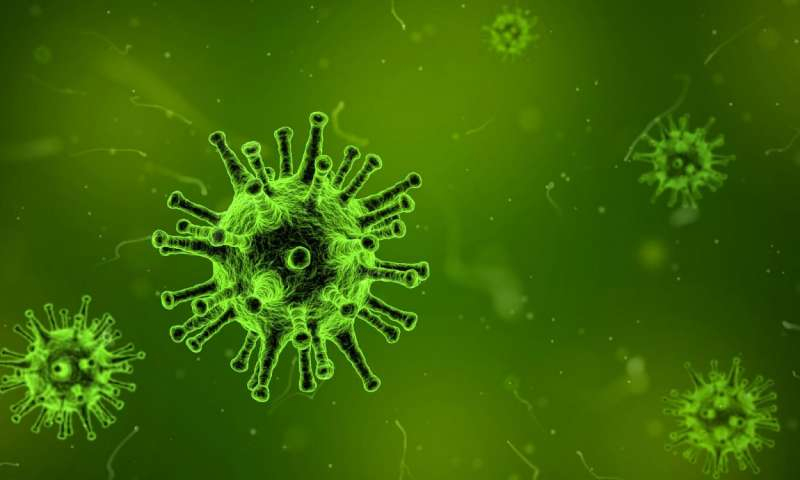Quelling Novel Coronavirus Anxieties
By Andrew Greenway, 2/11/20 (Header image is found at and is public domain.)
“It is clear that there is a massive effort that is made by China in order to contain the disease and avoid its propagation. I think that effort is remarkable…we need to avoid the stigmatization that can sometimes accompany a situation like this, in which all of a sudden, people who have nothing to do with it are stigmatized for any reason.”
United Nations Secretary-General Antonio Guterres calls for international solidarity on Saturday during the African Union Summit
Coronavirus cases top 60,000 as death toll spikes
The CDC is preparing for coronavirus ‘to take a foothold in the US’
Coronavirus Live Updates: Infections Skyrocket to Nearly 50,000 in Hubei Province
Skyrocketing infections in the tens of thousands, over 60,00 cases with a spiking death toll, and health officials preparing for a disease described with the same eloquence that fiction writers have described foreign occupations and post-apocalyptic scenarios.
Carefully choosing your words is essential in how an audience receives your message. While headlines may look dire, the statistics and scientific authorities invite us to be wary but not worried.
According to the National Health Commission of the People’s Republic of China (or NHC), as of Feb 11th, 31 provincial-level regions on the Chinese mainland have confirmed cases of 44,653 reports of the novel coronavirus, with 1,113 deaths confirmed deaths. These regions include the Xinjiang Production and Construction Corps and Hubei Province, with its capital of Wuhan, the provenance of the outbreak.
During this same daily briefing published yesterday, the NHC reported “2,015 new cases of confirmed infections (including 1,638 in Hubei province), 3,342 new cases of suspected infections (including 1,685 in Hubei province), 871 new serious cases, and 97 deaths.”
However, the number of new serious cases is calculated by subtracting the number of serious cases in the previous day from the current number of serious cases that may have developed into anywhere from mild to fatal cases.
“On Feb 11, the number of serious cases in 12 provincial regions decreased by 44, while the number of serious cases in 8 other provincial regions including Hubei increased by 915, with 897 from Hubei,” says the briefing.
On the day before, Feb 10, the NHC reported “2,478 new cases of confirmed infections (including 2,097 in Hubei province), 3,536 new cases of suspected infections (including 1,814 in Hubei province), 849 new serious cases (including 839 in Hubei province), and 108 deaths.”
By direct comparing between these two data points, we begin to develop a confusing web of relationships. From February 10-11, we saw a decrease in new cases by 463 but an increase in severity by 22 new serious cases, despite serious cases increasing by 915 on February 11th. Although there were fewer deaths than February 10th.
So if this is one of the authoritative sources on the outbreak, is it worsen or improving?
The World Health Organization stated in its “Situation Report – 23,” published February 12th, that “no new countries have reported cases of COVID-19 in the past 24 hours.” Globally confirming 45,171 cases with 2,068 new cases being brought to their attention within the day. Outside of mainland China, these numbers are much more stable than in the center of the outbreak with only 46 new cases being reported of the 441 confirmed cases in 24 countries with a single death occuring.
A full list of affected countries is published by the CDC.
So while still a substantial amount of individuals are affected, it remains relatively contained to the citizens of mainland China. Even amongst the affected populations, the NHC reports over 450,000 people were identified as having close contact with infected patients. 185,000 of which are under medical observation and 30,000 people were freed from medical observation. Additionally, the NHC reports that “in all, 4,740 patients had been cured and discharged from hospital.”
With so much uncertainty surrounding this public health emergency, citizens of the world and our own local communities are faced with difficult questions. The most pressing of which is, what can we do?
According to the health authorities and world leaders, protecting yourself from illness while remaining sympathetic to those suffering seems to be the best course of action.
Chancellor Angela Merkel continues to show Berlin’s support through their continued cooperation with Beijing on epidemic control and prevention. Additionally, during a Sunday call with Premier Li Keqiang, the pair expressed hopefulness that Berlin will continue to provide China with medical supplies, according to an article by China Daily.
The same article details Prime Minister of Sri Lanka, Mahinda Rajapaksa, leading Cabinet ministers and Parliament members in prayer on Wednesday for the Chinese people’s victory over the novel coronavirus and the United States “arranged for the shipping of nearly 17.8 tons of donated medical supplies to the Chinese people, including masks, gowns, gauze, and respirators.”
Additionally, other countries and their officials have committed their support as a sign of solidarity with China. French foreign policy adviser Emmanuel Bonne extended France’s support while South African President Cyril Ramaphosa expressed confidence in President Xi Jinping’s leadership. Brazilian President Jair Bolsonaro and Spanish King Felipe VI both respectively expressed his country’s solidarity with China and their readiness to contribute to the containment effort.
Even more locally, Peoria’s own OSF Healthcare released a statement regarding the outbreak as “low for most” but they’ll still be taking precautions.
So although the headlines may seem overblown at times and the numbers muddled, the message is clear. We’re all fighting this virus, even if it’s not our immune system taking the blow.


One Reply to “Quelling Novel Coronavirus Anxieties”